Scrub Hare
- December 26, 2023
- 0 comment
The Scrub Hare, scientifically known as Lepus saxatilis, is a fascinating species that inhabits various regions across Africa. Identified by its distinct physical features, the Scrub Hare is a medium-sized mammal characterized by its robust hind legs, large ears, and a soft, dense fur coat. Its fur coloration serves as excellent camouflage in its natural habitat, blending seamlessly with the surrounding vegetation. Found in diverse ecosystems, including savannas, grasslands, and shrubby areas, the Scrub Hare plays a crucial role in maintaining ecological balance through its herbivorous diet.
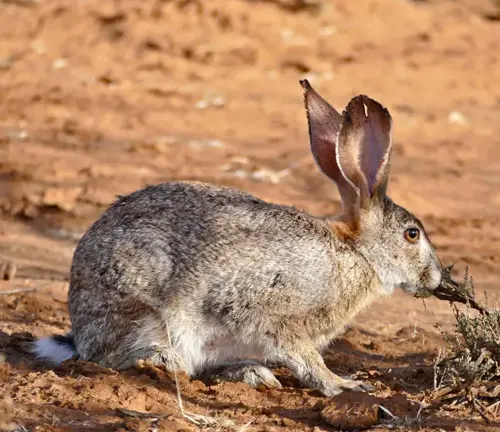
Despite its ecological significance, the Scrub Hare faces conflicts related to habitat loss and human encroachment. As human populations expand, the natural habitats of these hares are increasingly threatened, leading to challenges in their survival. Conservation efforts are crucial to address these conflicts and ensure the long-term well-being of the species.

In terms of legal status, the Scrub Hare is protected in various jurisdictions to prevent overhunting and habitat destruction. Conservation organizations work in collaboration with local communities and governments to enforce protective measures and promote sustainable practices that safeguard the Scrub Hare population.
Identification of Scrub Hares in the wild can be challenging due to their ability to swiftly navigate through dense vegetation. However, keen observers can distinguish them by their distinctive long ears and the rapid, zigzagging motion they employ when startled. These nocturnal creatures are primarily active during the night, foraging for a variety of plants and grasses.
The species range of Scrub Hares extends across sub-Saharan Africa, where they adapt to a wide range of climates and environments. Their distribution is influenced by factors such as food availability and suitable breeding grounds. Understanding their range is crucial for effective conservation strategies and habitat management.
In terms of health and safety concerns, Scrub Hares can act as hosts for various parasites and diseases. While they generally pose no direct threat to humans, it is essential to maintain a cautious distance to prevent stress or injury to the animals. Additionally, efforts to control the spread of diseases among wildlife populations are vital for overall ecosystem health.
| Aspect | Details |
|---|---|
| Scientific Name | Lepus saxatilis |
| Size | Medium-sized mammal |
| Physical Features | Robust hind legs, large ears, soft, dense fur coat |
| Fur Coloration | Camouflaging shades for natural habitat adaptation |
| Habitat | Savannas, grasslands, shrubby areas |
| Diet | Herbivorous, feeding on plants and grasses |
| Activity Period | Nocturnal, primarily active during the night |
| Movement Style | Swift, employing rapid zigzagging when startled |
| Distribution | Sub-Saharan Africa, adaptable to various climates |
| Conservation Status | Protected in various jurisdictions |
| Threats | Habitat loss, human encroachment |
| Legal Protections | Conservation measures to prevent overhunting |
| Health Concerns | Potential hosts for parasites and diseases |
| Human Interaction | Generally not a direct threat, maintain a cautious distance |
| Role in Ecosystem | Maintains ecological balance through herbivory |
The Intriguing World of Scrub Hares: Unveiling Their General Biology

In the diverse landscapes of sub-Saharan Africa, the Scrub Hare (Lepus saxatilis) emerges as a fascinating mammal with unique biological characteristics. These medium-sized hares exhibit a distinctive physical appearance, boasting robust hind legs, large ears, and a plush fur coat that seamlessly blends with the natural surroundings. As we delve into their general biology, we unravel the secrets that make the Scrub Hare a remarkable species in the African ecosystem.
A Tale of Continuity: Understanding the Reproductive Patterns of Scrub Hares
In the realm of reproduction, Scrub Hares follow intriguing patterns that contribute to the continuity of their species. These hares exhibit a rapid reproductive rate, with females capable of conceiving shortly after giving birth. Delving into the intricacies of their reproductive biology unveils a captivating aspect of the Scrub Hare life cycle, shedding light on their adaptive strategies in the wild.
Eccentric Behaviors: Decoding the Actions of Scrub Hares
Observing Scrub Hares in their natural habitat reveals a spectrum of behaviors that add to the species’ mystique. From their swift and zigzagging movements when startled to their nocturnal foraging habits, understanding the behaviors of Scrub Hares provides valuable insights into their adaptation and survival strategies. This article explores the behavioral intricacies that shape the daily lives of these elusive creatures.
Safe Havens: Nesting and Denning Covers of Scrub Hares
Scrub Hares, like many wildlife species, rely on specific nesting and denning covers for protection and shelter. Investigating the types of environments they choose for these purposes unveils the importance of suitable habitats in ensuring the safety and well-being of Scrub Hare populations. Discover the secluded corners where these hares create their havens in the heart of the African wilderness.
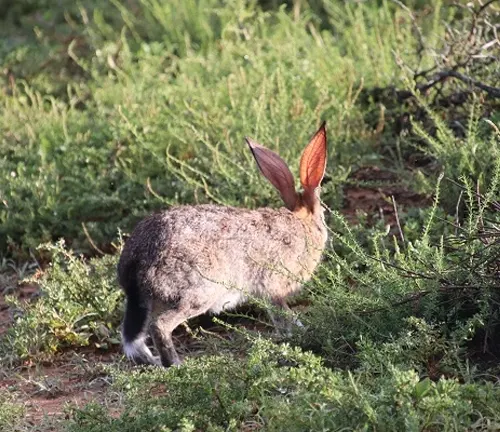
Adapting to Diversity: Exploring the Varied Habitats of Scrub Hares
The Scrub Hare’s ability to adapt to diverse habitats is a testament to its resilience. Whether traversing savannas, grasslands, or shrubby areas, these hares demonstrate a remarkable versatility in their habitat choices. By examining the specific ecosystems they inhabit, we gain a comprehensive understanding of the Scrub Hare’s ecological role and its significance in maintaining biodiversity.
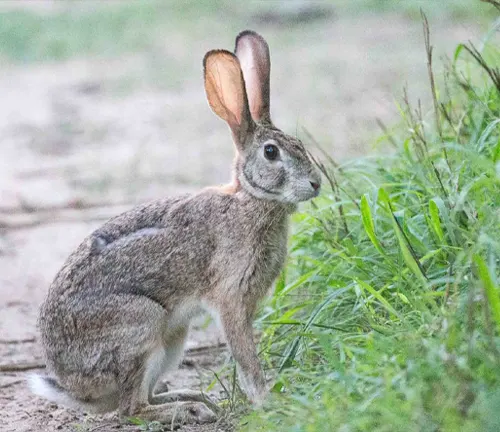
Grazing Under Moonlight: Unraveling the Food Habits of Scrub Hares
Feeding primarily on plants and grasses, Scrub Hares play a crucial role in shaping their local ecosystems. This article delves into their food habits, exploring the dietary preferences that sustain their energy levels and contribute to their overall health. Understanding the nutritional needs of Scrub Hares is essential for comprehending their ecological impact and promoting sustainable coexistence.
Whispers in the Night: Voice, Sounds, Tracks, and Signs of Scrub Hares
In the nocturnal realm where Scrub Hares thrive, their communication extends beyond vocalizations to encompass subtle sounds, tracks, and signs. Exploring the auditory and visual cues they employ provides a deeper understanding of their social dynamics and interactions. This article delves into the whispers of the night, unraveling the language of Scrub Hares through the traces they leave behind.
Identifying Damage Caused by Scrub Hares
As we navigate the intricate ecosystems of sub-Saharan Africa, the Scrub Hare (Lepus saxatilis) stands out as a captivating species. However, alongside their natural charm, these hares can sometimes pose challenges, particularly in human-dominated landscapes. In this exploration, we delve into the various aspects of damage identification caused by Scrub Hares and their implications on landscapes, crops, livestock, and structures.
Landscapes in Transition: Scrub Hares and Their Impact on the Environment
The presence of Scrub Hares in diverse landscapes plays a role in shaping the environment, but it’s essential to recognize the potential for impact. This article examines the damage inflicted by Scrub Hares on natural habitats, exploring how their foraging and nesting behaviors can contribute to changes in vegetation and alter the delicate balance of ecosystems. Understanding these dynamics is crucial for effective conservation and land management strategies.
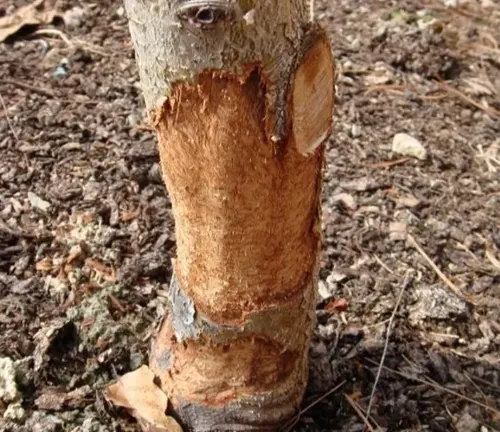
Agricultural Quandaries: Scrub Hares and the Toll on Crops and Livestock
For farmers in regions inhabited by Scrub Hares, there exists a delicate balance between coexistence and the protection of agricultural resources. Scrub Hares, with their herbivorous diet, can cause damage to crops and compete with livestock for available forage. This article delves into the challenges faced by agricultural communities, addressing the measures needed to mitigate the impact of Scrub Hares on crops and livestock.
Engineering Encounters: Scrub Hares and Their Interaction with Structures
As human settlements expand, Scrub Hares may encounter structures that inadvertently become part of their habitat. This article explores the potential damage Scrub Hares can cause to buildings, gardens, and other human-made structures. Understanding their interaction with such environments is crucial for implementing measures that protect both the hares and human property, fostering a harmonious coexistence.
Guardians of Harmony: Preventing and Controlling Damage Caused by Scrub Hares
As we navigate the delicate balance between coexistence and protection of resources, finding effective methods to prevent and control damage caused by Scrub Hares becomes paramount. In this exploration, we delve into various strategies, from habitat modification to exclusion, that aim to strike a harmonious chord between human activities and the natural behaviors of these intriguing creatures.
Harmony in Habitat: Modifying Environments to Minimize Scrub Hare Impact
Habitat modification emerges as a strategic approach to mitigate the potential damage caused by Scrub Hares. This article examines methods to adjust environments, considering vegetation, water sources, and nesting areas. By understanding and implementing habitat modifications, we can create spaces that minimize the impact of Scrub Hares on landscapes, crops, and livestock.
Boundaries and Borders: Exclusion Tactics for Scrub Hare Management
Creating defined boundaries becomes crucial in managing the interactions between Scrub Hares and human activities. Exclusion methods, such as fencing and barriers, serve as effective tools to protect crops, livestock, and structures. This article explores the nuances of implementing exclusion tactics, emphasizing the importance of well-designed barriers in fostering coexistence.
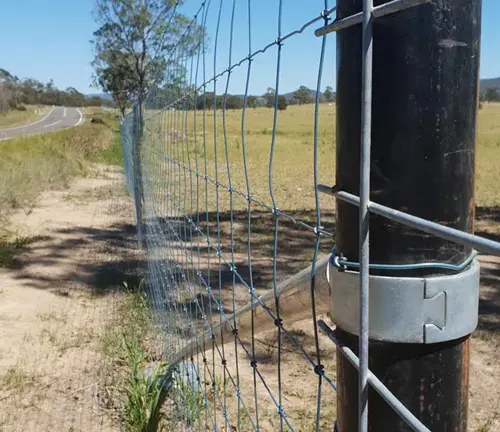
Startling Solutions: Frightening Devices to Deter Scrub Hares
Frightening devices introduce a dynamic element into the prevention and control strategies for Scrub Hares. By leveraging sound, light, or motion, these devices aim to deter hares from areas where they might cause damage. This article delves into the innovative world of frightening devices, exploring how technology and creativity can play a role in peacefully discouraging Scrub Hares from unwanted spaces.
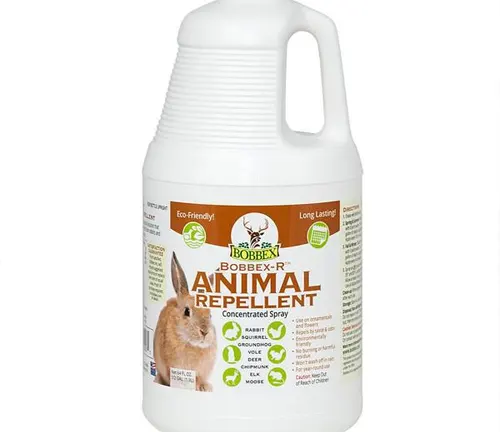
Aromatic Aversions: Repellents as a Gentle Deterrent for Scrub Hares
Repellents, with their olfactory power, offer a subtle yet effective means of deterring Scrub Hares. This article examines the use of scents and substances that create aversions for hares, discouraging them from venturing into areas where their presence may lead to damage. Understanding the nuances of repellents provides insight into the gentle art of encouraging Scrub Hares to coexist harmoniously.
Balancing Act: Scrub Hare Management with Toxicants
While considered a more drastic measure, the use of toxicants can be a part of a balanced approach to Scrub Hare management. This article explores the considerations, risks, and ethical aspects associated with using toxic substances to control hare populations. It emphasizes the need for responsible and targeted approaches in implementing toxicants as a means of prevention.
Navigating Ethical Avenues: Shooting as a Controlled Method for Scrub Hare Management
Shooting, when carried out responsibly and ethically, can be a controlled method for managing Scrub Hare populations. This article explores the considerations, regulations, and ethical guidelines associated with shooting as a means of population control. It emphasizes the importance of balancing conservation efforts with the needs of human communities.
Tactical Precision: Trapping as a Method for Scrub Hare Management
Trapping presents a methodical and humane approach to managing Scrub Hare populations. This article delves into the world of trapping, discussing various techniques and considerations for implementing this method. It emphasizes the importance of precision and ethical considerations in using trapping as a tool for managing Scrub Hares.
Different Species
Snowshoe Hare
(Lepus americanus)
Found in North America, the Snowshoe Hare is well-adapted to snowy environments, changing its fur color from brown in summer to white in winter for camouflage.
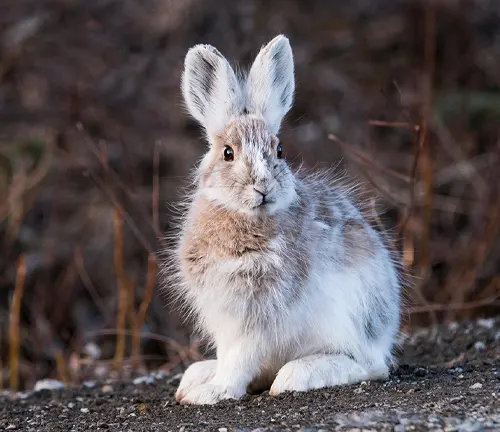
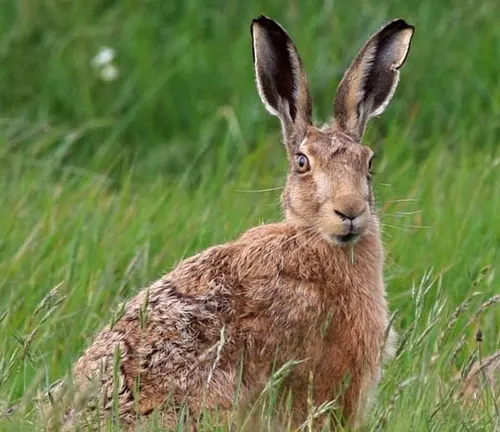
European Hare
(Lepus europaeus)
Native to Europe, the European Hare is a larger species with distinctive long ears and legs, often found in open grasslands and agricultural areas.
Arctic Hare
(Lepus arcticus)
Inhabiting the Arctic regions of North America, Greenland, and the Eurasian Arctic, the Arctic Hare is adapted to cold climates, featuring a dense fur coat and strong hind legs.

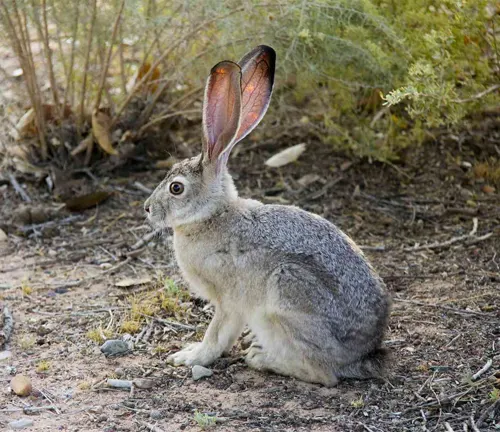
Black-tailed Jackrabbit
(Lepus californicus)
Found in North America, these hares have long ears and distinctive black tails. They are adapted to arid environments and are known for their powerful hind legs.
European Brown Hare
(Lepus capensis)
Native to Europe and parts of Asia, the European Brown Hare is larger than the European Hare, with longer limbs and a reddish-brown fur coat.
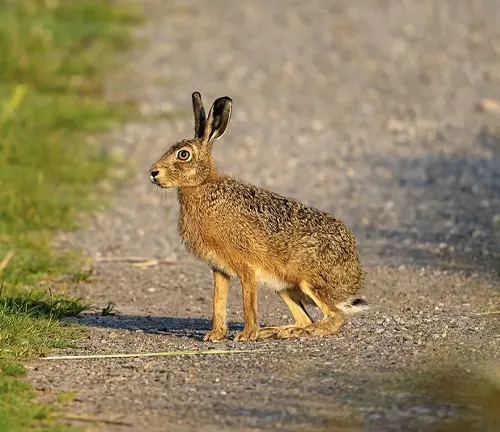
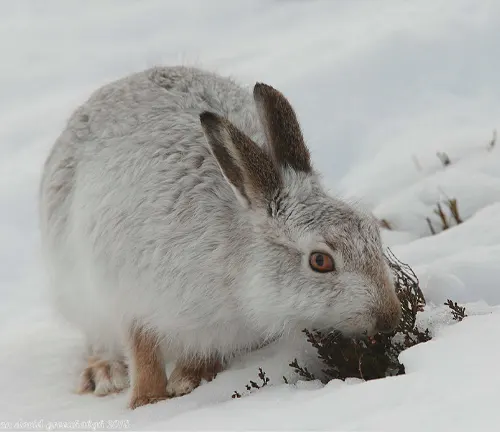
Mountain Hare (Lepus timidus)
Inhabiting mountainous regions of Europe, Asia, and North America, the Mountain Hare changes its fur color from brown in summer to white in winter.
Cape Hare
(Lepus capensis)
Native to southern Africa, the Cape Hare is similar in appearance to the Scrub Hare, with long ears and legs. It is found in a variety of habitats, including grasslands and shrubby areas.


Manchurian Hare
(Lepus mandshuricus)
Found in eastern Asia, the Manchurian Hare inhabits forested areas and is known for its distinct coloration and markings.
Frequently Asked Questions (FAQs)
- What is a Scrub Hare?
Scrub Hare (Lepus saxatilis) is a medium-sized hare species native to sub-Saharan Africa. It is known for its distinctive physical features, including robust hind legs and large ears. - Where are Scrub Hares Found?
Scrub Hares are primarily found in various habitats across sub-Saharan Africa, including savannas, grasslands, and shrubby areas. - What is the Diet of Scrub Hares?
Scrub Hares are herbivores, feeding on a diet of plants and grasses. Their foraging activity is primarily nocturnal. - Are Scrub Hares Nocturnal?
Yes, Scrub Hares are primarily nocturnal, meaning they are most active during the night. This behavior helps them avoid predators and forage in cooler temperatures. - How Do Scrub Hares Reproduce?
Scrub Hares have a rapid reproductive rate. Females can conceive shortly after giving birth, contributing to their ability to adapt and thrive in various environments. - Do Scrub Hares Cause Damage to Crops?
In certain circumstances, Scrub Hares may cause damage to crops by foraging on plants. However, the extent of damage can vary depending on factors such as habitat and food availability. - Are Scrub Hares Protected?
The legal status of Scrub Hares can vary, but in many regions, they are protected to prevent overhunting and habitat destruction. Conservation efforts are in place to ensure their well-being. - What is the Difference Between Scrub Hares and Other Hare Species?
Scrub Hares are distinct from other hare species in terms of their physical characteristics and geographic distribution. Each hare species has unique features adapted to its specific environment. - How Can Damage Caused by Scrub Hares be Controlled?
Various methods can be employed for damage prevention and control, including habitat modification, exclusion tactics, frightening devices, repellents, toxicants (used responsibly), shooting (where legal and ethical), and trapping. - Do Scrub Hares Pose Safety Concerns to Humans?
Generally, Scrub Hares do not pose direct threats to humans. However, it is advisable to maintain a cautious distance to prevent stress or injury to the animals.


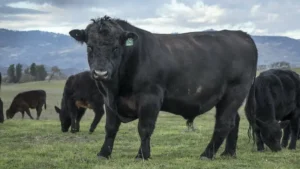
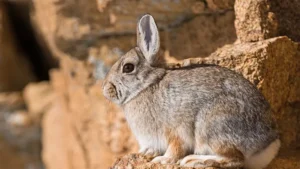

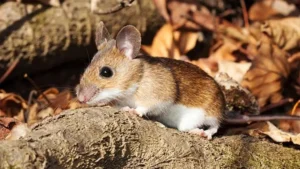
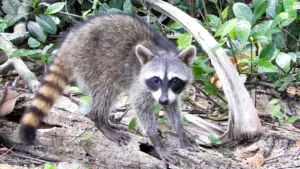
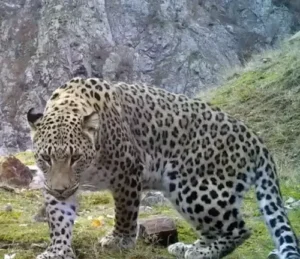

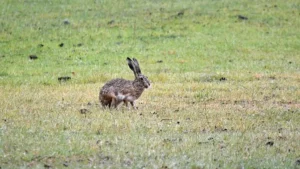

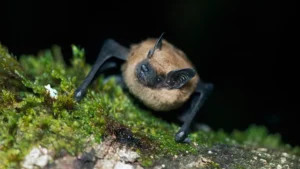

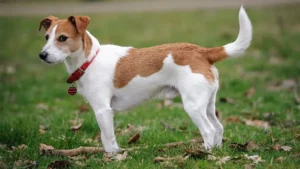
Leave your comment